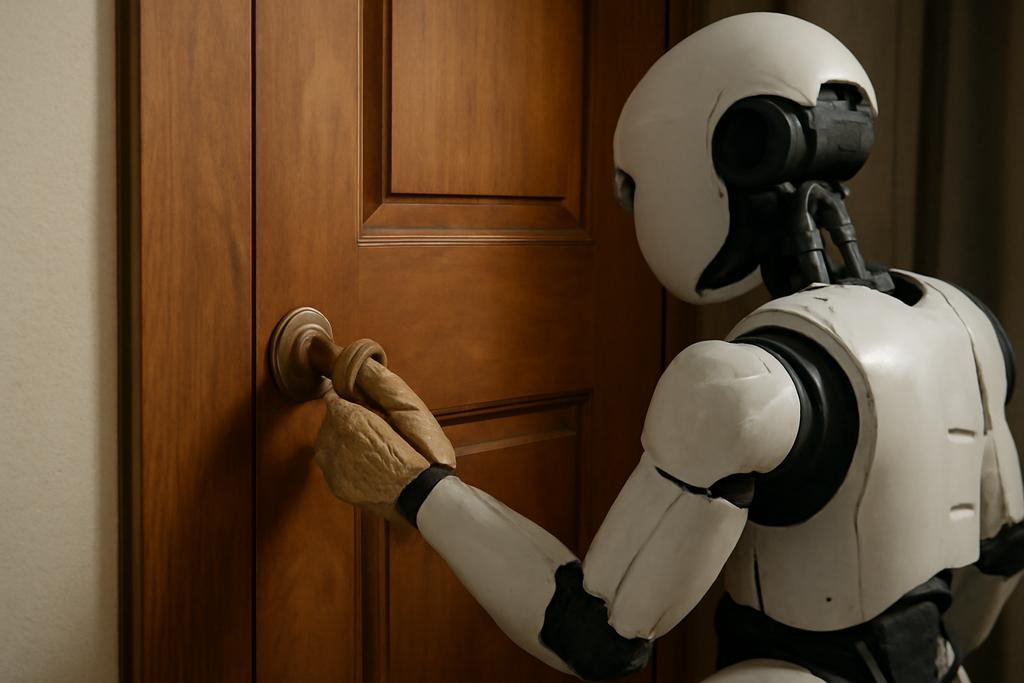Why Feeling Matters More Than Seeing for Robots
Robots opening doors, pulling drawers, or twisting knobs might sound like a mundane chore, but it’s a surprisingly complex dance of touch, prediction, and adaptation. At the heart of this challenge is the robot’s ability to understand and manipulate objects that aren’t rigid or fixed — things that bend, rotate, slide, or twist in unexpected ways. These are called articulated objects, and mastering them is essential for robots to truly live and work alongside humans.
Researchers at Peking University, led by Zhi Han, Lecheng Ruan, and Yixin Zhu, have unveiled a breakthrough in how robots use their sense of touch to handle these tricky objects. Their new system, TacMan-Turbo, doesn’t just react to what it feels — it anticipates what’s coming next, making robot movements smoother, faster, and more human-like.
The Tug-of-War Between Reliability and Speed
Imagine trying to open a drawer you’ve never seen before. You don’t know if it slides smoothly or if it’s stuck somewhere. You might gently pull, feel the resistance, adjust your grip, and try again. Robots face a similar dilemma. They need to be effective — able to complete the task reliably even when the object’s internal mechanics are unknown or unpredictable. But they also need to be efficient — performing the task quickly and without unnecessary movements.
Until now, roboticists have struggled to balance these two goals. Methods that rely on detailed models of how an object moves can be fast but brittle — if the model is off, the robot fails. On the other hand, tactile-based methods that feel their way through the task are robust but slow, often moving in cautious, stop-and-correct cycles that drag out the process.
Tactile Feedback as a Treasure Trove of Clues
What makes TacMan-Turbo stand out is its fresh perspective on tactile feedback. Instead of treating deviations in touch as mere errors to fix, the system treats them as valuable clues about the object’s local mechanics. It’s like a blindfolded person not just feeling that a door handle is off-center, but using that sensation to predict how the door will swing open.
By collecting sequences of these tactile clues, TacMan-Turbo builds a local map of how the object moves. This allows the robot to predict the next best move and adjust its grip proactively, rather than waiting to react after a mistake happens. The result? A fluid, continuous manipulation that feels almost intuitive.
Testing the Touch: From Simulations to Real Drawers
The team rigorously tested TacMan-Turbo on 200 simulated objects ranging from simple sliding drawers to complex mechanisms following curved paths. The system achieved a perfect success rate — every object was manipulated successfully. But the real magic was in the numbers: TacMan-Turbo was up to 18 times faster than previous tactile methods, with smoother, more direct movements.
Real-world experiments brought the system out of the lab and into everyday scenarios. The robot deftly opened a microwave door, pulled a drawer, and even turned a vise handle with a complex helical motion. In each case, TacMan-Turbo outpaced the older reactive methods, completing tasks in a fraction of the time while maintaining a firm, stable grip.
Why This Matters for Robots Living Among Us
Robots in factories can rely on fixed, well-known objects. But robots in homes, hospitals, or offices face a wild variety of objects with unknown quirks. TacMan-Turbo’s ability to learn from touch and anticipate movements without needing detailed blueprints is a giant leap toward robots that can adapt on the fly.
Think of it as giving robots a sense of touch that’s not just reactive but predictive — a tactile intuition. This opens doors (literally and figuratively) for robots to assist with everyday tasks, from helping elderly people open cabinets to performing delicate operations in healthcare.
The Road Ahead: Smarter, Faster, More Sensitive
The researchers envision even more adaptive robots that can optimize their initial approach speed and direction automatically, and that can integrate different types of tactile sensors. Combining this proactive tactile control with learning algorithms could lead to robots that not only predict but also learn from their mistakes, becoming more dexterous over time.
In a world where robots and humans increasingly share spaces, the ability to feel, predict, and move with grace will be as important as raw strength or speed. TacMan-Turbo shows us that sometimes, the best way forward is to trust your fingertips and think a few steps ahead.










